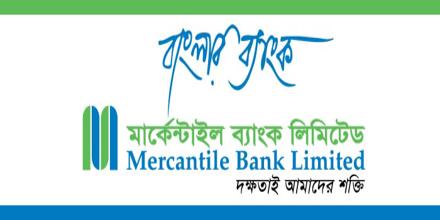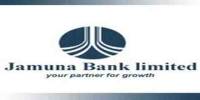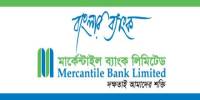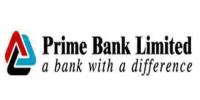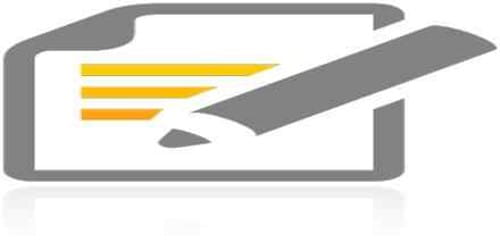Credit Management of Mercantile Bank Limited
This report is basis on ‘Credit Management of Mercantile Bank Limited’ which is prepared from experience of working in Credit Department at MBL. Now-a-days, Banks and Financial Institutions are becoming very competitive and various kinds of services and products provided by financial institution are increasing with rapid growth. People need money to accommodate their livelihoods as well as updating with the present world of living, therefore people take ‘Credit/Loan’ from the bank anytime during life. This report focuses on different credit facilities provided by Mercantile Bank Limited and its overall procedure of lending.
With the clear mission to provide efficient banking services and to contribute socio-economic development of the country, Mercantile Bank Ltd emerged as a new commercial bank and inaugurated its operation on 2nd June, 1999. The bank stood 86 branches all over the country upto 2012. There are 30 sponsors involved in creating Mercantile Bank Limited. The sponsors of the bank have a long heritage of trade, commerce and industry. They are highly regarded for their entrepreneurial competence. The one of principle target of MBL is to make credits available to the poor people & their activities are aimed at multifaceted growth where people from all economic strata will enjoy the benefits of better living standard, dignity of labor and self worth.
The major task for a bank is to survive in the competitive environment of credit service by managing its assets and liabilities in an efficient way. And Mercantile Bank Limited manages the assets and liabilities in effective way and earns success and prosperity consistently. It operates in a disciplined and prudent manner with a focus on driving productivity initiatives with delivering sustainable improvements in business performance.
Objective of the report
Objective of the report is divided into two categories. These are: broad & specific objectives.
General Objective
The general objective of the study is to know about the credit/loan management system at Mercantile Bank Limited as well as to view the current status of overall loan condition of MBL.
Specific Objectives
The specific focuses of the study are:
- To find out the overall activities of credit management system.
- To depict the procedures that bank follows for lending to the customers.
- To analyze the performance of Asset Products and Liability products of MBL.
- To describe the detailed operational procedure of different credit facilities along with their associated benefits.
- In which way MBL recovers the bad debts & get back the uncollected advances
Methodology of the Study
The study requires a systematic procedure from selection of the topic to final report preparation. To perform the study, the data sources are identified and collected, these are classified, analyzed, interpreted and presented in a systematic manner and key points have been found out. The overall processes of methodology are given below-
Selection of the topic:
The topic of the study was suggested by honorable supervisor. Before assigning the topic it was discussed with supervisor so that a well organized internship report can be prepared.
Identifying data sources:
Essential data sources from both primary and secondary are identified which are completed and worked out for the study.
Primary data
- Discussion with officials of Mercantile Bank Limited
- Direct involvement in the credit management activities in MBL
- Direct Observation
Secondary data
- Annual report of MBL
- Credit rating report of MBL by CRISL (Credit Rating Information and Services Limited)
- Monthly published reports and documents
- Office circular and other published papers, documents
- Various type of statements
About Mercantile Bank Limited
History
Mercantile Bank Limited was incorporated in Bangladesh as a Public Limited Company with limited liability under the Bank Companies Act, 1991 on May 20, 1999 and commenced commercial operation on June 02, 1999. The Bank went for public issue of shares on in 2003 and its shares are listed with Dhaka Stock Exchange and Chittagong Stock Exchange. The Bank has 84 branches spread all over the country. MBL is a highly capitalized new generation Bank with an Authorized Capital and paid-up Capital of Tk. 8000.00 million and Tk. 4968.90 million respectively. With assets of TK. 116,655,283,665 and more than 1668 employees, the bank has diversified activities in retail banking, corporate banking and international trade.
There are 30 sponsors involved in creating Mercantile Bank Limited; the sponsors of the bank have a long heritage of trade, commerce and industry. They are highly regarded for their entrepreneurial competence. The sponsors happen to be members of different professional groups among whom are also renowned banking professionals having vast range of banking knowledge. There are also members who are associated with other financial institutions insurance Companies, leasing companies etc.
MBL undertakes all types of banking transactions to support the development of trade and commerce in the country. MBL’s services are also available for the entrepreneurs to set up new ventures and industrial units. The bank gives special emphasis on Export, Import, Trade Finance, SME Finance, Retail Credit and Finance to women Entrepreneurs. To provide clientele services in respect of International Trade it has established wide correspondent banking relationship with local and foreign banks covering major trade and financial centers at home and abroad.
With the passage of time it has expanded its number of branches and variety of services along with its core business of taking deposits and granting loans. Rising trend of the bank’s profitability over the last 13 years is also materialized. The MBL is committed to the delivery of the superior shareholders’ value.
Credit Management of Mercantile Bank Limited
Overview
Mercantile Bank Limited is a new generation Bank. It is committed to provide high quality financial services/products to contribute to the growth of GDP of the country through stimulating trade & commerce, accelerating the pace of industrialization, boosting up export, creating employment opportunity for the educated youth, poverty alleviation, raising standard of living of limited income group and over all sustainable socio-economic development of the country.
In achieving the aforesaid objectives of a Bank, Credit Management has paramount importance as the greatest share of total revenue a Bank generates from it. Existence of the bank depends on prudent management of its credit operation where maximum risk is centered in it and. In most of cases, the failure of a commercial bank is usually associated with the problem in credit management as well as the result of shrinkage in the value of assets. Therefore, credit management has not only featured domination in the assets structure of the bank but also critically important to the success of the bank.
The standards of credit relate to safety, liquidity and profitability whereas these dynamic factors are also related to different aspects such as interest or margin, credit spread, nature and extent of risk and credit dispersal. In the Kawran Bazar Branch’s Credit Department, there are six officials are working continuously with great effort and teamwork and they have quite efficient skills and talent to perform the jobs in this department. The Bangladesh Bank, Credit Division at Head Office of MBL and the respective officers of branch in the section control this credit department.
The officers believe in teamwork and extreme hard working. In all business dealings, credit officers are guided by the principles of honesty, integrity and safe-guard the interest of the depositors and credit customers of the bank. Credit officers principally perform credit management task by providing fund (credit) to customers and receiving fund back by charging interest along with installments with obeying rules and regulations of the Bangladesh Bank and Head Office as well as maintaining the best business practices in the Bank. However, the key to safe, liquid, healthy and profitable credit operations lies on the quality of credit management which is performed by the credit officers.
Industry & Business Focus:
As a general practice, Mercantile Bank Limited principally concentrates its business in Trade Finance/Export–Import businesses and all types of Commercial Loan, Industrial/Project Finance/Syndication and structured Finance/SME Financing and other specialized programs except the businesses are restricted by the Government or indicated as unethical and banned. The Bank gives emphasis to diversify its business portfolio commensurate with economic and business trend, life cycle of the products, demand supply gap, social and national obligation etc.
Discouraged business types:
The Bank discourages lending to following areas of the businesses:
- Military Equipment/Weapons Finance
- Tobacco sector
- Companies listed on CIB black list or known defaulters
- Highly Leveraged Transactions.
- Finance of Speculative Investments
- Logging, Mineral Extraction/Mining or other activity that is Ethically or Environmentally Sensitive
- Counter parties in countries subject to UN sanctions.
- Share Lending (Not more than 60% of share value of last 6 (six) months market average or maximum 35 lac whichever is lower or as per guidelines of Bangladesh Bank)
- Taking an Equity Stake in Borrowers
- Bridge Loans relying on equity/debt issuance as a source of repayment.
General System & Procedure Related To Credit / Lending:
To grant advances is one of the most important functions of a bank. The strength of bank depends considerably on the quality of its advances and proportion of bearing to the total deposits. Traditionally bank has been following three cardinal principle of lending in different credit schemes, these are: safety, liquidity and profitability. Another determination but not principle, the bank also consider humanity where bank always looks for true entrepreneur who can really support society by establishing own-self. Confidence in the borrower is the basis of secured advances. The confidence is judged by five considerations- Character, Capacity, Capital, Collateral and Condition.
Lending process of MBL goes through different steps with complying terms and conditions of Bangladesh Bank.
Here, the Credit department of MBL follows the following steps in lending-
- Application for loan proposal:
Firstly, the borrower who willing to make a commitment with bank by taking loan, he must write an application through the ‘Head of Branch” of bank and submit it to the officer at credit department.
On proper scrutiny of the application, branch will inform the initial decision (acceptable for processing/decline) to the applicant within 3(three) working days from the date of receiving application.
Applicant must present the following additional papers along with application-
- Trade license and TIN Certificate (if any) for businessperson.
- TIN Certificate of applicants for vehicle loan (compulsory)
- Salary certificate for service holders.
- Bank statement of last six month.
- Attested photocopies of current tax receipt, electric bill etc & lease agreement (if any) when the source of income is house rent as a landlord.
- Selection of borrower:
The selection processes include identifying source of repayment and assessing customer’s ability to repay, expected future cash flows, his / her past dealings with the bank, the net worth and information from CIB. The Bank must identify the key drivers of the borrower’s business as wellas the key risks to their businesses. There is an age limit for borrower, age of the proprietor/partners/directors must be range between 21 years to 60 years.
- Preliminary screening of credit proposal:
The management committee of credit department of bank gathers different documents and then evaluates all of the papers, documents. The credit management committee obtains these mandatory following documents
- Formal application for financing
- Business plan
- Personal guarantee
- Appraisal of asset to be financed
- Personal financial statement
- Business financial statement
- Purchase agreement
- Cash-flow projection
- TIN certificate
- Bank solvency certificate
- Stock report duly verified (where applicable)
- VAT certificate
- Export license (Applicable for export oriented business)
- In case of L/C detailed performance of L/C during last year
- Market reputation
C I B Inquiry:
The borrower duly filled CIB form and then the bank obtains CIB report from Credit Information Bureau (CIB). The borrower’s status must be reflected in the CIB report on regular basis i.e. monthly for Tk. 1.00 crore and above and quarterly for all the facilities outstanding of Tk. 50,000.00 to below Tk. 1.00 crore. Besides, statement for Tk. 10,000.00 to below Tk. 25,000.00 and Tk. 25,000.00 to below Tk. 50,000.00 has also to be reported.
The Bank also obtains the ‘Credit report’ and opinions from other banks if the client has other bank account.
- Security analysis:
To make the loan secured, charging security on the credit facilities is very important because it represents commitment of the borrower; it protects the interest and ensures the recovery of the money lent.
The important modes of charging a security are the following:
(i) Lien
(ii) Pledge
(iii) Mortgage
(iv) Assignment
(v) Set-off
Methods used in charging depend on:
- the nature of the advance
- the type of property to be charged
- the degree of control required over the debtor’s property
- Site visit:
The bank management visits at borrower’s land, property which is placed as security against credit. Here, Head Office Credit Team assists (on need basis) in site visitation. After site visitation, Branch credit team forwards a detailed site visit report regarding the project to the Head Office of MBL duly signed by the officer and Head of Branch / Operation Manager.
- Documentation:
Documentation can be described as a process or technique of obtaining the relevant documents. When bank is going to lend to a borrower after inquiring the character, capacity, collateral and capital of the borrower, the bank must obtain proper documents which are executed from the borrower to protect against willful defaults. Moreover, when money is lent against some security of assets, the document must be executed in order to give the bank a legal and binding charge against those assets. Documents contain the precise terms of granting loans and these serve as important evidences in the law courts if the circumstances so desire. That’s why proper documentation must be completed prior to the disbursement of the facilities.
Charged documents as required for documentation are mentioned bellow:
- Demand Promissory (DP) NOTE signed on revenue stamp
- Letter of arrangement
- Letter of Authority
- Letter of Installment
- Letter of Revival
- Letter of partnership (partnership farm) or Board of resolution (limited companies)
- Letter of hypothecation
- Supplementary Letter of Hypothecation
- Letter of lien and ownership / share transfer form (in case of advance against share)
- Letter of lien (in case of advance against F D R)
- Letter of lien and transfer authority.(in case of advance against P S P, B S P)
- 12. Legal documents for mortgage of property (As draft by legal adviser)
- Valuation certificate of the collateral security in Bank’s form with photograph of the security
- Site visit report
- Sanction of loans or advances
When a branch manager writes letter to the customer accepting all terms and conditions of loan, it is called loan sanction.
The most important conditions which are taken in loan sanction are given below:
- Limit of the loan amount
- Primary securities / Collateral securities
- Rate of interest of the loan
- Expire date
- Repayment
- Documentation
- Other conditions (If available)
- Disbursement of loans or advances
Loan disbursement has to be made after completion documentation. Disbursements of loan facilities are made when all documentation is in place.
Here are steps of the disbursement-
- Finally Credit division at Head Office has completed documentation of the loan that sanctioned by them.
- After completion of the documentation and sanction, Credit Division sends a copy of “Disbursement Order” along with “Approval letter” to Head of Credit Administration Division (CAD) & the respective branch for disbursement of the loan.
- Security Documents of the loans sanctioned from Head Office are signed by customer(s) in branch of disbursement and retained original. A set of photocopy of originals is required to be sent to Head Office.
- A set of photocopy of loan documents is retained by Credit team at Head Office, the disbursement branch retains the originals.
Credit File Maintenance
After completion of all steps in lending, the bank makes and reserves a ‘Credit File’ of the respective customer. The maintenance of credit files is disciplined to force the lending officer to obtain all relevant documents and encourages him to consider all relevant information when analyzing customer risk.
Primary items in credit files include:
- Credit application, Credit approval notes/analysis. The analysis contains information about the borrower, credit purpose, credit repayment sources, details of collateral security with valuation and guarantee. It also contains an assessment of the competence and quality of the borrower’s management, the general economic and competitive environment of the borrower’s industry and any other pertinent factors, which present the borrower’s ability to repay the facility.
- All supporting data such as financial statements, reference, credit investigation results, CIB & other Bank reports and notes of all discussions with the borrower and other relevant parties with paper clipping.
- Correspondences, call reports, site visit reports stock reports etc. Each credit file is maintained in a secured location and access restricted to authorized personnel.
- Evidence of credit approval and data upon which approval was granted together with any comments, if appropriate. Copy of sanction & disbursement letter, a check list along with copies of all Legal & Banking documents.
SWOT Analysis of MBL
STRENGTHS
- Top management
- Satisfactory asset quality.
- Good internal capital generation.
- Satisfactory operating efficiency
- Diversified product lines
- Low human resource turnover
- Experienced Management Team
- Favorable reputation in the banking industry
- High growth rate
- Interactive corporate culture
WEAKNESS
- No long-term strategies
- Failed to provide a strong qualityrecruitment policy in the lower and some mid level position
- Service quality of this bank is good but hot high as the customers’ expectation
- Having a group of unsatisfied employees.
- Low promotional sector
OPPORTUNITIES
- Merchant banking or diversify into leasing and insurance sector.
- Investment in the Secondary market
- Opportunity in retail banking
- Expansion of its product line to enhance sustainable competitive advantage
- Introduction of special corporate scheme for the corporate customers
THREATS
- Increasing cost of fund
- Increased Market competition
- Product Risk
- The default risks of all terms of loan
- The low compensation package of the employees from mid level to lower level position
Findings
During crafting this report I have gone through different aspects of Credit policies and procedures of Mercantile Bank Limited. By analyzing, I have identified the following findings as importantly:
Title of Mortgaged property is not free from complexity:
The bank keeps mortgaged property (i.e. house, land) from borrower against the loan. Before mortgaging any property, the bank reviews all necessary documents related to ownership of property. But sometimes, complexity of mortgaged property has been found after the loan disbursement.
For instance, the property which is given by the borrower to the bank for mortgaging may have partial ownership of another person (i.e. person’s brother or sister) who lives outside country. When he/she gets acknowledgement about the mortgaging of his/her property, he/she may go for law-suit action against the bank and borrower. Therefore, the bank faces trouble with law-suit case and other legal difficulties.
Lack of proper support from valuation company:
Sometimes it has been found that the collateral security which is kept by borrower shows in higher-value (biased-over) than its actual value. For illustration, before taking collateral security (i.e. land, building) from the client against loan by bank, the bank goes for valuation of the collateral security and they assign this valuation task to a third party i.e. Geometric Survey Co. Ltd. But after valuation, the respective survey company has presented the value of the security over than actual because the borrower intentionally made influences on survey company to show higher value to bank. As a result, the bank cannot recover reported value of securities if the borrowers become default.
Political and Social Pressure:
Often the bank faces pressures from different political, social persons to make consideration in granting loan to their recommended person. Though the person who is applying for loan may fail to satisfy conditions in some cases, for example the collateral security is not matched with demanded loan amount (under-valued). But here the bank grants loan to this person who partially fulfills the requirement for loan because of continuous pressures from respective political person. Some directors of MBL have already involved in political and social activities and it has been found that the directors recommend to the bank’s officer on the behalf of their relatives and well-known persons to grant loan without fulfilling all requirements. As a result, here the principle terms and conditions for lending are violated.
Fund diversion by borrower:
The loan which is provided by bank for business purpose may be used in personal purposes by the client. Here the bank faces problem of getting installment from client within specific time. For instance, a person applies for the loan for extending his business, the bank evaluates all requirements which are fulfilled by customer. Then the bank authority finds that the person has capability to do a small profitable business and he also needs financial assistance to extend his business. But after taking loan from bank, the client intentionally invests it in the stock market instead of investing in his business extending purpose. Here, the client violates the conditions of credit. Ultimately, the bank confronts with problems to take installment if the client fails to pay the installment within the specific time.
Recommendations
While workings at MBL, there were certain things that came in front of my eyes which I have mentioned in findings, I think MBL should consider those criteria for the development of credit management. Perhaps MBL has its own options and strategy to follow in these issues, however I am not fully acknowledged about those. Here are some recommendations as per my findings-
The bank must analyze all evidences of mortgaged property:
As title of mortgaged properties may have complexity, so a comprehensive and accurate appraisal of the property in every credit proposal of the bank is important and mandatory.
No proposal can be put on place unless there has been found a complete, accurate evaluation of property. In order to safeguard the mortgage over the entire period of the advance, a comprehensive view of the capital of borrower, adequacy, and nature of security should be compliance with all regulatory/legal formalities and condition of all documentation. It is absolute responsibility of the Credit Officer to ensure that all the necessary documents are analyzed properly before the loan is placed for approval. On the other-hand, where Loans/Advances/Credit facilities are granted against the guarantee of the third party, that guarantor must be subject to the same credit assessment as made for the principal borrower.
Valuation task should be assigned to confident party:
Sometimes the bank becomes swindled by valuation party. So the bank must assign property valuation task to that kind of confident party who strictly follows the terms and condition in evaluating proper value of the property, assets as well as maintaining confidentiality.
Enlisted Surveyor Company approved by the bank should make valuation of property and properly assess the quality and priority of the proposed security. The bank should keep a pleasant relationship with valuation party in order to acquire proper valuation.
The bank should being independent from pressures:
Credit proposals should not be influenced by any political person whether it is the matter between bank and client. It also should not be affected by the sponsored principal’s reputation, reported independent means or by the banks of owner side. These situations should be discouraged and treated with great caution. Rather, credit proposals and the granting of loans should be based on sound fundamentals supported by a systematic financial and credit risk analysis.
The bank must keep close follow-up after the disbursement:
The loan should be utilized for the specified purpose for which it has been sanctioned. Furthermore, the bank must be vigilant so that the disbursed funds for a particular purpose are not diverted elsewhere without their knowledge. Otherwise, the aim of the advance would be missing. Here, bank should keep follow-up so that the bank does not lose the fund because of the misuse or abuse of the borrower. Classification of advances may be avoided by properly and timely follow up – so it can be said, “A stitch in time saves nine.” For instance, to follow-up the existing borrowers, the historic performance in meeting repayment obligations (payment of installments, cheque, interest and principal payments etc.) should be assessed. In this regard the Credit Officer may look into the account turnover like debt summation/credit summation/highest debit balance/highest credit balance (or lowest debit balance), number of debit entries/ number of credit entries for last year (year wise).
Therefore, the bank must accept any difficulties and think of them as objective to pursue future goals by solving the problems instead of blaming other factors and MBL must be able to keep on playing its important roles in our economy.
Conclusion
Mercantile Bank has established credit relationship with many reputed multinational companies, semi-government organization as its customer group ranges from individuals, organizations and small businesses covering all sectors of Corporate and Retail businesses. MBL has aim to contribute in potential sectors like as agriculture, electronics, SME, healthcare etc. by providing not only credit services but also taking essential steps to expand these sectors through participating actively in economic development of the country.
Though MBL has been facing a number of problems regarding to credit service, it has been able to achieve “AA-” credit rating in last two consecutive years which indicates a banking entity with high credit quality, higher safety and have superiority in customer service. In believing, MBL will make a positive attempt to be more outward looking in their goals and emphasize on the domestic scenario more closely and analyze any certain trends and strategies of their competitors.
